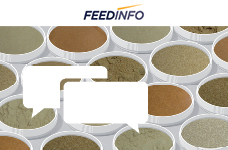
Interview published on 24 October on FeedInfo
In recent decades, the use of organic forms of trace elements such as selenium has taken off, as we have learned more about how organic forms improve the bioavailability and efficacy of the element in question.
However, as more and more products have been launched in the selenium yeast category in particular, it has become difficult for the end user to sort through the different product claims. What actually makes for a good organic source of Se?
Moreover, the science in this space is evolving. Whereas we were previously unable to determine the exact “species” of selenium present in a selenium yeast, according to Adisseo, a new analytical method might be able to shed new light on this question.
In today’s Industry Perspectives piece, we hear from two members of Adisseo’s antioxidants team – Denise Cardoso, PhD, Global Scientific and Technical Manager of Antioxidant Solutions and Mohammed Amine Hachemi, DVM, R&I Project Manager of Antioxidant Solutions – about the insight that can be derived from this new analytical method and what it means when it comes to making an informed choice about the optimal source of organic selenium.
[Feedinfo] There are several different sources of selenium available in the animal nutrition market. What determines their bio-efficacy?
[Denise Cardoso] In selenium (Se) nutrition, the bio-efficacy of a source is determined by its capacity to transfer Se into the tissues. The Se sources used in animal feeds are classified in two main groups: inorganic and organic forms. Inorganic sources, such as sodium selenite, were the first authorized form of supplementation in the early 1970’s and they are able to supply Se, albeit with a low bio-efficacy.
 Denise Cardoso, PhD
Denise Cardoso, PhDGlobal Scientific and Technical Manager of Antioxidant Solutions Adisseo
Since the 2000’s, organic forms known for their high bio-efficacy, such as SeYeast and pure forms of organic Se, have been developed and they differ mainly on their selenomethionine (SeMet) content. While SeYeasts, the first generation of organic Se, have a minimum of 63% of its total Se as SeMet, pure forms can provide 100% of their total Se as SeMet.
Over the last few decades, it has been proven by the scientific community that SeMet is the only Se specie that is able to build Se storage in animal tissues, and this is why it is considered the real driver of bio-efficacy. The Se body reserves work as an insurance policy to be used later on, especially under challenging conditions. Stress situations result in an increase in the antioxidant requirement and a decrease in feed intake, thus resulting in a lack of nutrients, such as Se, which are needed to support the antioxidant system and, therefore, to support an animal in coping with challenges. Maximizing the supplementation of SeMet in the feed is a smart nutritional strategy to improve the resilience of animals and maintain their performance under stress.
[Feedinfo] Adisseo argues that new analytical methods have determined that many selenium yeasts don’t conform to their specified values in terms of the percentage of organic selenium present. What evidence do you have that this is the case?
[Mohammed Amine Hachemi] Recent analytical methods have led to a more accurate determination of the Se composition of SeYeast and revealed another inorganic species that is surprisingly present in large quantities. The analyses have also confirmed a high variability of the SeMet content, which raises questions about the proportions of organic Se in SeYeast products.
 Mohammed Amine Hachemi, DVM
Mohammed Amine Hachemi, DVMR&I Project Manager of Antioxidant Solutions
Adisseo
It is well known that SeYeasts have a complex and highly variable composition of Se species, depending on the yeast strain. Currently, SeYeasts are registered as feed additives to provide a minimum of 97% of the total Se as organic Se and at least 63% as SeMet. It has also been reported that SeYeasts contain up to 26% of selenocysteine (SeCys), less than 2% of selenate and selenite, water-soluble and water-insoluble selenometabolites and a quite variable amount of unknown or unidentified Se species.
The mass balance between the total Se and the quantified Se species in SeYeast has never been reached, suggesting the presence of unaccounted forms of Se. The unaccounted Se in SeYeast has always been considered organic for two main reasons. First, the Selenocompounds present in SeYeast result from the biotransformation of the inorganic Se by the growing yeast. At the end of this process, all the used inorganic Se is removed and only a residual part remains. The second reason is that no analytical method was available to directly analyze the total organic Se content in SeYeast. However, the proportion of organic Se could be deduced after subtracting selenate and selenite, the only inorganic compounds assumed so far, from the total Se.
[Feedinfo] What can you tell me about these new analytical methods?
[Mohammed Amine Hachemi] On top of the standard methods for total Se, SeMet, Selenite and Selenate quantification, a new analytical method has been developed by Vacchina et al. (2021) to measure the inorganic form, that is elemental selenium (sometimes also called metal Se or Se(0)) in SeYeast. Briefly, this method involves the transformation of elemental Se into selenosulfate, a soluble compound that can then be quantified. In our last study, the total Se and other standard analysis of SeYeast compounds (SeMet, SeCys, Selenite and Selenate) were also applied in order to check the proportion of inorganic and organic Se. The inorganic part included Selenite, Selenate, and elemental Se, whereas the organic portion was considered to be the difference between the total Se and the Inorganic Se part.
[Feedinfo] How many samples were tested, and where were these samples taken?
[Mohammed Amine Hachemi] Thirteen fresh commercial samples of SeYeasts from different feed additive suppliers and different batches from some of the same suppliers were analyzed. These samples included the main authorized SeYeasts strains. The total Se concentration of those samples varied between 2000 and 3000 ppm.
[Feedinfo] Who conducted the analyses?
[Mohammed Amine Hachemi] The analyses were performed at the Ultra Traces Analysis Aquitaine (UT2A) laboratory in Pau, France, the same lab that has recently developed and published details about the method to quantify elemental Se. The UT2A laboratory is recognized throughout the world because of their expertise in trace element identification and speciation, and they have conducted significant work on Selenium analysis over the last decade.
[Feedinfo] What specifically did they find, instead of organic selenium?
[Mohammed Amine Hachemi] Elemental Se, an inorganic Se species, was found in all the SeYeast samples tested in this study, where it varied between 3.6% to 51.8% of the total Se. These results corroborate those obtained by Vacchina et al. (2021), who found that the level of elemental Se in 7 SeYeast samples ranged between 8 and 40% of the total Se. The proportions of elemental Se found in SeYeast in these studies seems to explain the previously unknown or undefined Se species.
[Feedinfo] How far off was the organic selenium level from the minimum content which had previously been assumed?
[Mohammed Amine Hachemi] As previously mentioned, there is no single method that is able to quantify the total organic Se in SeYeast, therefore it is normally calculated by the difference of the various inorganic Se species. Adding elemental Se to the previously known Selenite and Selenate inorganic components, the study revealed an average proportion of inorganic Se of 14.2% and, consequently, only 85.8% of organic Se. These values are far below the 97% indicated up to now. It also seems that the proportion of this inorganic form is inversely related to the proportion of SeMet, because we observed that the more elemental Se you have, the less SeMet is present. The quantification of SeMet, as in past studies, was confirmed to be highly variable (from 19% to 72%). Notably, the SeMet content obtained from 8 out of the 13 tested SeYeasts samples was below 63%, which is indicated in their characterization. Finally, the analysis of the SeCys content showed that there is also a significant variability of this Se species, which ranged from 1 to 7%. Moreover, this recovered amount (on average only 3.8%) showed that the SeCys in SeYeast is far below the proportions that are normally claimed by the different suppliers (up to 1/3 of the total Se).
[Feedinfo] Were you surprised by these findings? What could account for such wide variability in the actual content of products on the market?
[Denise Cardoso] It was indeed surprising to discover such a large amount of inorganic Se in SeYeast. We know there is still a gap between the total Se content of SeYeast and what can be quantified. Up to now, everything else that could not be quantified was assumed to be organic compounds, but now we know that there is more inorganic Se than we previously believed.
SeYeast production is a complex process that involves applying an aerobic fermentation of yeast in a Se-enriched medium. This biological process is regulated by different factors, such as the yeast strain, the pH, temperature, shaking speed, aeration, the source and the amount of inorganic Se used to enrich the yeast, among others. Slight changes in these factors and, in particular, a high amount of inorganic Se (with the aim of maximizing the Se concentration, e.g., from 2000 to 3000 ppm) can affect the quality of the final product and the reproducibility of the production process.
The high variability of the SeMet content in SeYeasts is less surprising given that it has been largely reported in the literature. Studies have shown there is an inconsistency not only between different products (brands) but also between batches from the same supplier.
[Feedinfo] Why would inorganic selenium (or forms which are similar to inorganic selenium in their bio-efficacy) be found in selenium yeast, anyway?
[Denise Cardoso] Many biological outcomes are generated by the yeasts during yeast fermentation because it is a biological process, and this results in a large amount of produced seleno-compounds. The main organic species is SeMet, but many other compounds are present, and their proportion in the total will depend on the fermentation process described above. For example, a high level of sodium selenite is very toxic for yeast, which may result in a reduction in yeast growth and the production of SeMet. To reduce the toxicity of sodium selenite, the yeast cell converts it into elemental Se.
[Feedinfo] What does it mean in terms of animal health and performance if the selenium from a seleno-yeast is less bioavailable than formulators originally believed?
[Denise Cardoso] As mentioned at the beginning of this discussion, the driver of Se bio-efficacy is the SeMet content, not the total Se, the elemental Se content or other Se compounds (e.g. SeCys), and if the SeMet values are lower than expected, the ability of the animals to cope with stressful conditions is in fact impaired.
SeMet not only supplies the required daily amount of Se for the animals, but the amount that is not used to fulfill the immediate requirements is stored in the animals’ tissues and mobilized under stress conditions to maintain or maximize the selenoproteins synthesis and, consequently, the antioxidant protection of the animals. SeMet in tissues works like an insurance policy which can be used when animals experience stress.
[Feedinfo] Is hydroxy-selenomethionine such as Selisseo® subject to the same variability? Why not?
[Denise Cardoso] Not at all. Selisseo® is produced by means of a controlled and standardized chemical synthesis, and not a biological fermentation as for SeYeast, and we are therefore able to consistently provide 100% of the total Se as hydroxy-selenomethionine batch after batch. Today, hydroxy-selenomethionine is still a unique molecule and is only available on the worldwide market as Selisseo®, since Adisseo holds all the patents related to its synthesis and manufacturing process.
[Feedinfo] Do you believe regulatory change is in order in light of the progress in analytical techniques?
[Denise Cardoso] Yes, indeed. As science is constantly evolving and often ahead of regulations, the development of analytical methods allow us to further understand the composition of Se sources, including SeYeasts. These elucidations are used to update regulatory bodies with data, so that they can continue to offer state-of-the art information to Se source users. We hope that, in the coming years, these specifications will be even more precise and comprehensive than they are today.
[Feedinfo] In your opinion, how should end users adapt to this discovery? How should this influence the decisions taken about the sources and inclusion levels of selenium?
[Denise Cardoso] The new insight will help nutritionists and procurement professionals make a more thoughtful decision when it comes to selecting and choosing an organic Se additive. In fact, thanks to these new findings, it is now clear that SeYeast products provide larger amounts of inorganic Se than previously believed and, therefore, their commercial and nutritional values should also be revised.
Since SeMet, the driver of bio-efficacy, shows large variations during SeYeast production, it could be interesting to provide users with clear labeling information regarding the real SeMet content and the precise amount of inorganic Se in addition to the total Se to guarantee the quality of organic Se source products. As Se inclusion is strictly regulated in diets, choosing a source that consistently provides high levels of SeMet, that will maximize its storage capacity and that will offer the most performance benefits to animals when facing the current and recurrent production challenges is critical.
For more information, please read the technical article ‘Is there more inorganic selenium in Seleno-Yeasts than previously believed?’
Watch the video to know more:

